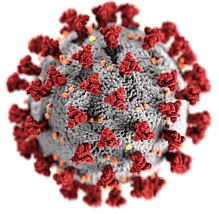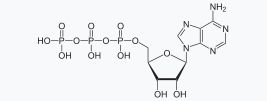


 Return to Index
Return to Index
 Introduction
Introduction
 Top of Page
Top of Page

 ATP (Adenosine Triphosphate)
ATP (Adenosine Triphosphate)
 Top of Page
Top of Page

 Adenosine
Adenosine
 Top of Page
Top of Page

 Citocoline
Citocoline
 Top of Page
Top of Page

 HMB (Hydroxymethylbutyrate) and L-Leucine
HMB (Hydroxymethylbutyrate) and L-Leucine
 Top of Page
Top of Page

 Phosphorus
Phosphorus
 Top of Page
Top of Page

 Ribose
Ribose


 Top of Page
Top of Page

 Alpha Version of COVID (Original Version)
Alpha Version of COVID (Original Version)
 Top of Page
Top of Page

 Omicron
Omicron
 Top of Page
Top of Page

 Current COVID Variant
Current COVID Variant
 Top of Page
Top of Page

 Long-Haul COVID
Long-Haul COVID





 Top of Page
Top of Page

 Allergies
Allergies
 Top of Page
Top of Page

 Blood Sugar Abnormalities
Blood Sugar Abnormalities
 Top of Page
Top of Page

 Brain Fog and Fatigue
Brain Fog and Fatigue
 Top of Page
Top of Page

 Claudication, Intermittent
Claudication, Intermittent
 Top of Page
Top of Page

 Cysts
Cysts
 Top of Page
Top of Page

 Eyes
Eyes
 Top of Page
Top of Page

 Gas, Sharp Pain in the Left Shoulder
Gas, Sharp Pain in the Left Shoulder
 Top of Page
Top of Page

 Hearing Loss & Tinnitus
Hearing Loss & Tinnitus
 Top of Page
Top of Page

 Kidney Disease
Kidney Disease
 Top of Page
Top of Page

 Lymphedema
Lymphedema
 Top of Page
Top of Page

 R-CPD - Retrograde Cricopharyngeus Dysfunction (inability to burp)
R-CPD - Retrograde Cricopharyngeus Dysfunction (inability to burp)
 Top of Page
Top of Page

 Rash
Rash
 Top of Page
Top of Page

 Sleep
Sleep
 Top of Page
Top of Page

 Sodium
Sodium
 Top of Page
Top of Page

 Taste & Smell
Taste & Smell
 Top of Page
Top of Page

 Tremors
Tremors
 Top of Page
Top of Page

 Vaccine
Vaccine
 Top of Page
Top of Page

 Venous Eczema, Venous Stasis Dermatitis, Gravitational Dermatitis
Venous Eczema, Venous Stasis Dermatitis, Gravitational Dermatitis
 Top of Page
Top of Page

 Summary
Summary
In many cases, the "length" of your "long-haul" symptoms is directly related to
your diet (your intake of phosphorus, ribose, minerals, etc).
 Top of Page
Top of Page

 Shopping
Shopping



 Top of Page
Top of Page

 Return to Index
Return to Index Bonnie's Links
Bonnie's Links bonniehill@verizon.net
bonniehill@verizon.net last modified on July 8, 2025
last modified on July 8, 2025URL: http://www.bonniehill.net/pages/covid.html
